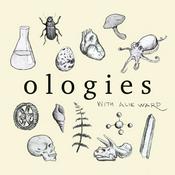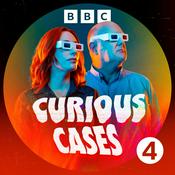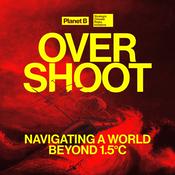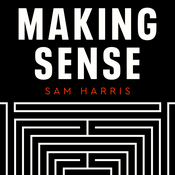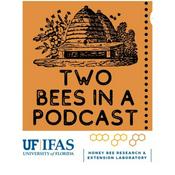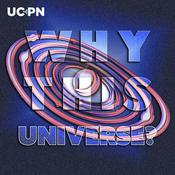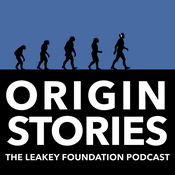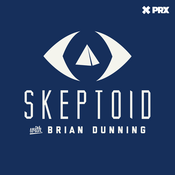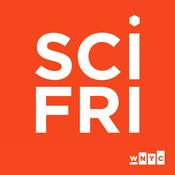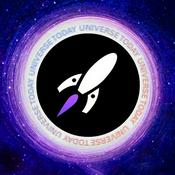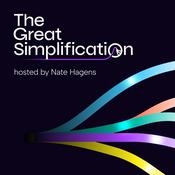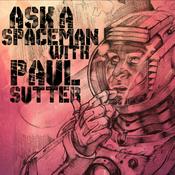86 episodes

A New Way to Measure Bat Hearing
22/12/2025 | 19 mins.
Studying bats' hearing can be tricky due to their small size, making certain styles of measurement used for larger echolocating mammals unavailable to researchers. In this episode, we talk to Victoria Fouhy and Michael Smotherman (Texas A&M University) about their work to develop a noninvasive method to study cortical auditory evoked potentials in bats, thereby allowing scientists to better understand how these animals process echolocation information.Associated paper:- Victoria Fouhy, Sam Ellis, and Michael Smotherman. "Subcutaneous cortical auditory evoked potentials in echolocating bats." J. Acoust. Soc. Am. 158, 3390-3399 (2025). https://doi.org/10.1121/10.0039659.Read more from The Journal of the Acoustical Society of America (JASA).Learn more about Acoustical Society of America Publications.Music Credit: Min 2019 by minwbu from Pixabay.

Sonic Deception in World War II
08/12/2025 | 15 mins.
You may have heard of the "ghost army" of World War II—a set of rubber tanks used by the US Army to mimic active battlefields in Europe. What you may not know was the tanks were accompanied by an equally fake soundtrack of battle noises. Even more surprising? This "sonic deception" was developed by a team of the ASA's founding members whose contributions were almost lost to history. In this episode, we talk with Walter Montano (ARQUICUST Argentina Peru) about the innovations that helped save thousands of lives during the war.Read the associated article: Walter A. Montano and Gary W. Elko. (2025) “Sonic Deception During the Second World War,” Acoustics Today 21(2). https://doi.org/10.1121/AT.2025.21.2.38Learn more about the ASA Committee on Archives and History.Read more from Acoustics Today.Learn more about Acoustical Society of America Publications.Intro/Outro Music Credit: Min 2019 by minwbu from Pixabay.

The Unique Acoustics of Traditional Chinese Interlocked Timber-Arched Covered Bridges
24/11/2025 | 24 mins.
The traditional Chinese structure of the interlocked timber-arched covered bridge serves multiple purposes within Chinese culture—both as a physical connection between communities, but also as a function space for various rituals and performances. Because of these structures multiple uses, the acoustics are different from other bridges or event spaces. In this episode, we talk with Dongxu Zhang (Guangzhou University) and Jian Kang (University College London) about their work to better understand the unique acoustics of these structures.Associated paper:- Dongxu Zhang, Guanyu Ren, Fei Cheng, Dong Xiao, Mei Zhang, and Jian Kang. "Sound field characteristics and influencing factors of traditional Chinese interlocked timber-arched covered bridges." J. Acoust. Soc. Am. 158, 1156-1176 (2025). https://doi.org/10.1121/10.0038959Read more from The Journal of the Acoustical Society of America (JASA).Learn more about Acoustical Society of America Publications.Music Credit: Min 2019 by minwbu from Pixabay.

The Eras of Taylor Swift's Changing Dialect
10/11/2025 | 27 mins.
Longitudinal studies of how an individual's accent changes over the course of their life are hard to come by. Fortunately, Taylor Swift's decade-plus career-- and the numerous interviews she's given over those years-- has opened a window into our understanding of how and why dialect changes may occur on an individual level. We talk to Miski Mohamed and Matthew Winn (University of Minnesota) about their work analyzing the shifts in Taylor Swift's speech over the years.Associated paper:- Miski Mohamed and Matthew B. Winn. "Acoustic analysis of Taylor Swift's dialect changes across different eras of her career." J. Acoust. Soc. Am. 158, 2278–2289 (2025). https://doi.org/10.1121/10.0039052Read more from The Journal of the Acoustical Society of America (JASA).Learn more about Acoustical Society of America Publications.Music Credit: Min 2019 by minwbu from Pixabay.

The Acoustic Impacts of Marine Energy Converters
20/10/2025 | 52 mins.
In an effort to develop renewable energy, scientists have turned to the sun, the wind, and now the ocean. With these new forms of energy harvesting, considerations need to be made about how the new technologies will impact the surrounding environments. In this episode, we talk with Joseph Haxel (Pacific Northwest National Laboratory), Christopher Bassett (University of Washington), Brian Polagye (University of Washington), and Kaus Raghukumar (Integral Consulting) about their research related to the noise produced by marine energy converters.Read the associated article: Joseph Haxel, Christopher Bassett, Brian Polagye, Kaustubha Raghukumar, and Cailene Gunn. (2023) “Listening to the Beat of New Ocean Technologies for Harvesting Marine Energy,” Acoustics Today 19(4). https://doi.org/10.1121/AT.2023.19.4.23.Read more from Acoustics Today.Learn more about Acoustical Society of America Publications.Intro/Outro Music Credit: Min 2019 by minwbu from Pixabay.
More Science podcasts
Trending Science podcasts
About Across Acoustics
Listen to Across Acoustics, Ologies with Alie Ward and many other podcasts from around the world with the radio.net app
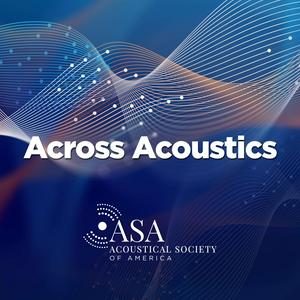
Get the free radio.net app
- Stations and podcasts to bookmark
- Stream via Wi-Fi or Bluetooth
- Supports Carplay & Android Auto
- Many other app features
Get the free radio.net app
- Stations and podcasts to bookmark
- Stream via Wi-Fi or Bluetooth
- Supports Carplay & Android Auto
- Many other app features


Across Acoustics
download the app,
start listening.
